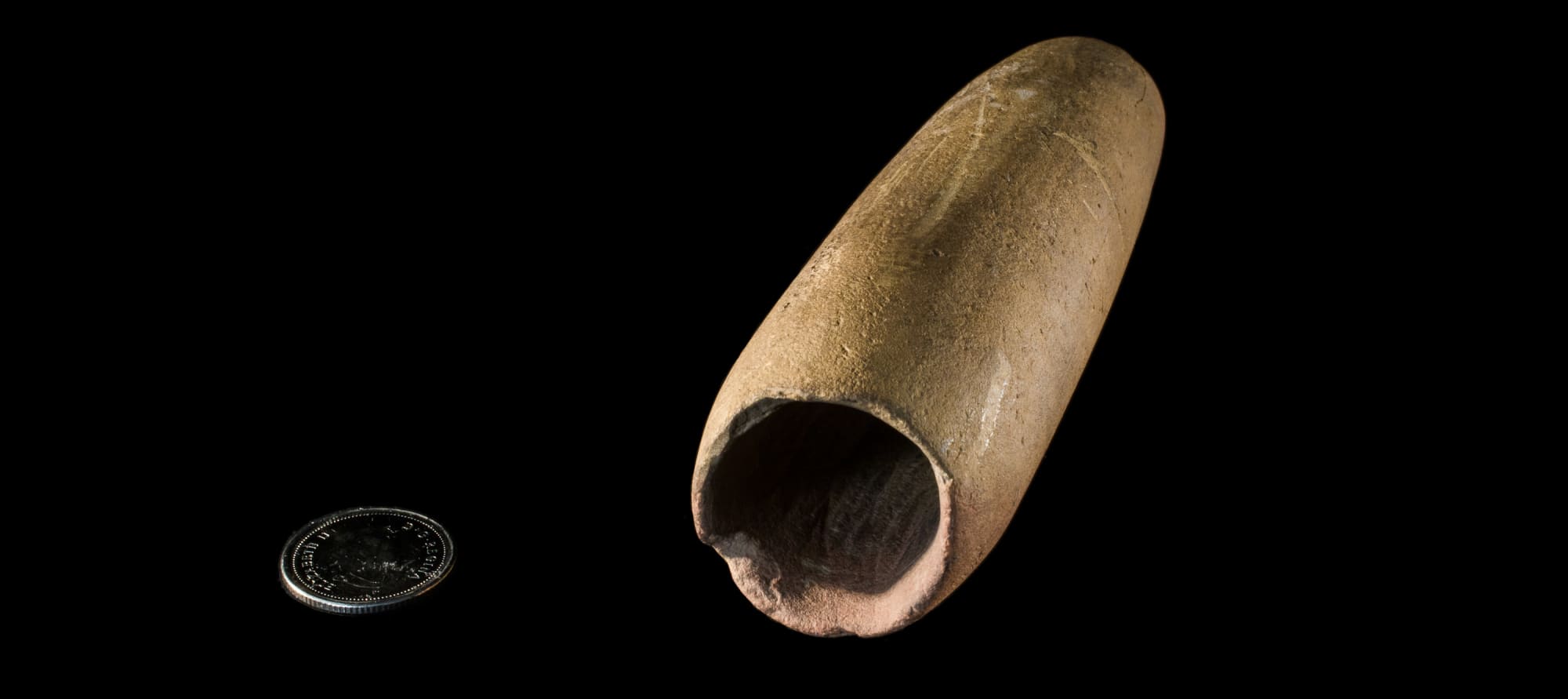
Blocked-end Tube 004.99.222
Some of the earliest archaeological evidence of smoking appears in the archaeological record around 2,500 years ago in the form of blocked-end tubes such as the specimen shown here. At one end of the cylinder is a wide bowl (seen here) to accept the smoking materials. At the opposite end, the interior tapers to a narrow constriction before widening again towards the mouthpiece. A pebble sometimes remains on the bowl side of the constriction, placed there to prevent the burning smoking materials from being drawn through the constriction while still allowing the smoke to pass through. The rarity of such pipes suggests that, at least initially, smoking was primarily an activity deeply embedded in the practice of shamanism. This would be consistent with the ability of many traditional smoking materials to facilitate altered states of consciousness, including the variety of tobacco used by Indigenous people across the Americas. Smoking would facilitate communication with the spirit world, cleanse and purify, and help cure patients of various afflictions.
Indigenous botanical knowledge was exhaustive and multidimensional. Foods included such things as potherbs, nuts, seeds, fleshy fruits, mushrooms, roots, tubers, and sap. Raw materials included poles for construction of dwellings, racks, hearths, traps, and weirs, fibre and roots for rope and twine, bark for shingles, baskets, and canoes, pitch for adhesive, and cambium for basket splints. Plant-based medicines were not a separate category but crosscut all of these categories; plant food was not just food but also medicine, and so on. Medicines could also be applied or ingested in different ways, including by smoking, and while tobacco was perhaps the most important medicine traditionally smoked by Indigenous people in the Great Lakes area, there were dozens of other botanicals that were also smoked, often in combinations.
 Smoking Pipes
Smoking Pipes